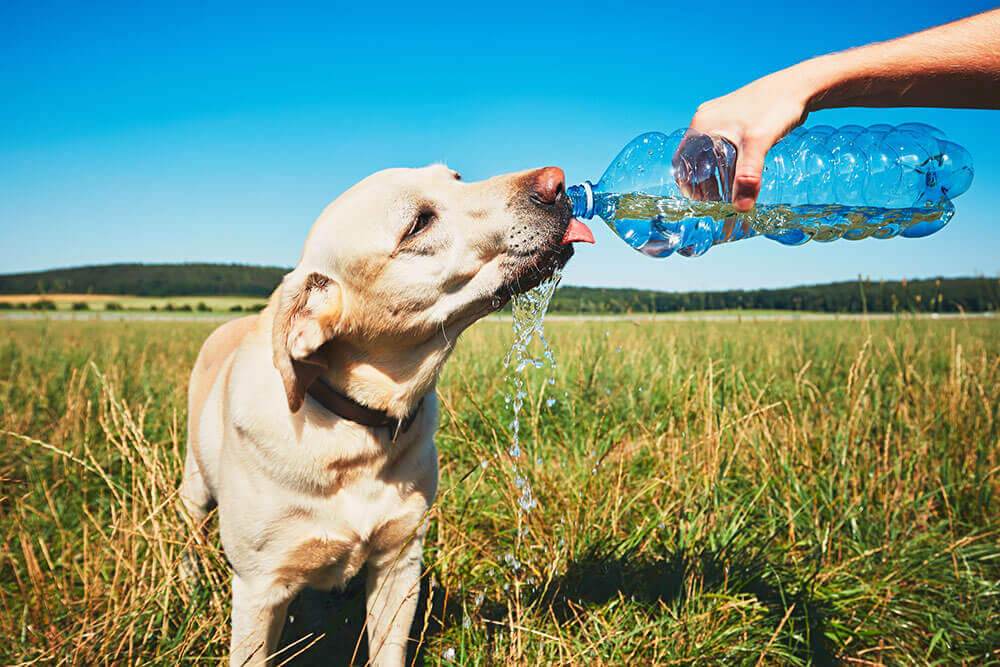Summer heatstroke warning
AWLQ’s tips for keeping pets safe in hot weather.

Pets, like people, are susceptible to the effects of extreme heat.
Providing protection for our pets in hot weather is critical. With a few precautions, you can keep your pets happy and safe in the heat.
Animal Welfare League Queensland (AWLQ) shared its top tips for summer pet safety.
Heatstroke dangers for pets
A variety of situations, such as leaving a dog in a hot car, going for a midday walk with your dog, or simply leaving a pet in your backyard with no shade, can contribute to an animal overheating.Heatstroke can occur when an animal’s temperature rises to a critical level. Normal body temperatures for dogs and cats range from 38.3 to 39.2 degrees Celsius. When a dog’s temperature rises to 42+ degrees, or a cat’s to 41+ degrees, they can suffer heatstroke, brain damage, and even death.
Signs and treatment of heatstroke in dogs, cats and other animals
Pets showing signs of heatstroke may include heavy panting that does not resolve as the pet rests, increasing distress, a tongue colour that is a dark red to almost purple, weakness or collapse, hyper-salivation, vomiting and laboured breathing.Move a pet suffering from heatstroke out of the heat immediately. Cool the animal’s ears, belly and paw pads with cool (but not freezing or icy) water. Never put the animal into cold water or cover them with a cold, wet blanket.
Once the pet is stabilised, take them to your veterinarian immediately. The animal may be experiencing issues internally that are not visible to you.
Guinea pigs can overheat very quickly, particularly those kept in wooden hutches and sheds outdoors which can heat up extremely rapidly. Heatstroke can be fatal, so it’s essential that guinea pig owners take steps to prevent this including moving hutches into the shade and providing cooling ice blocks and fans to regulate temperatures. Signs of heat stroke include lethargy, panting and convulsions. If you suspect that your guinea pig has heatstroke you must seek veterinary help immediately.
Tips for keeping pets safe in hot weather
AWLQ recommends taking these precautions to keep dogs and cats healthy and comfortable as the temperature.
- If your pet must be outside during the day, ensure that they have access to shade at all times. Never leave your dog tied up as they could become tangled, out of reach of shade or water. Grass and greenery help keep the backyard cooler.
- Provide pets with fresh, cool water at all times. Most dogs won’t drink hot water, no matter how thirsty they are. If your dog stays outside during the day, make sure his water bowl isn’t in a place where it can be tipped over. Clamshell pools are a great way to provide dogs with their own puddle in which to play.
- Exercise dogs during the cooler morning or evening hours, not in the intense afternoon heat. Dogs who are seniors, overweight, have thick fur, or a pushed-in nose (such as boxers, pugs and bulldogs) are even more at risk of overheating. Bring water for both you and your pet, or a collapsible bowl if there’s a water source on your route.
- Be aware of the temperature of the road, footpath or even sand, since the heat can cause burns to your pet’s paw pads if it get too hot.
- Dogs with bald patches or minimal coats may need sunscreen.
- Never leave your pet in a car – not even with the windows partway down, not even in the shade, not even for a quick errand. Dogs and cats can’t sweat like humans, so they pant to lower their body temperature and heatstroke can happen quickly.
- If it’s too hot for us to stay comfortable in the car, in the yard, or on a walk, it’s even hotter for our furry companions.
Choose RACQ Pet Insurance for care you can count on
Related topics
Things to note
The information in this article has been prepared for general information purposes only and is not intended as legal advice or specific advice to any particular person. Any advice contained in the document is general advice, not intended as legal advice or professional advice and does not take into account any person’s particular circumstances. Before acting on anything based on this advice you should consider its appropriateness to you, having regard to your objectives and needs.
Insurance Products (excluding Travel Insurance) are issued by RACQ Insurance Limited ABN 50 009 704 152 (RACQI) and arranged by its agent, RACQ Distribution Services Pty Ltd (RDS) ABN 35 116 361 650, AFSL 567130 and RDS' authorised representatives (including RACQ Operations Pty Ltd ABN 80 009 663 414, AR No. 234978 (RACQO). Conditions, limits and exclusions apply. RDS and RACQO are in the RACQ group of companies. One of the companies in the RACQ group of companies has a minority shareholding in RACQI.
RDS and RACQO have not taken your personal objectives, circumstances or needs into account when preparing advice regarding insurance products and you will need to consider whether the advice is appropriate for you. Read the Product Disclosure Statement (PDS) and any applicable Supplementary PDS before making a purchase decision on this product. You can also access our Target Market Determinations on this website. RDS receives a commission from RACQI for the policies it arranges. RACQO receives fees paid for services it provides to RDS. Further details about remuneration are available on request prior to purchasing.
Banking and loan products issued by Members Banking Group Limited ABN 83 087 651 054 AFSL/Australian credit licence 241195 trading as RACQ Bank. Terms, conditions, fees, charges and lending policies apply. This is general advice only and may not be right for you. This information does not take your personal objectives, circumstances or needs into account. Read the disclosure documents for your selected product or service, including the Financial Services Guide and the Terms and Conditions, and consider if appropriate for you before deciding.
Except for RACQ Bank, any RACQ entity referred to on this page is not an authorised deposit-taking institution for the purposes of the Banking Act 1959 (Cth). That entity’s obligations do not represent deposits or other liabilities of RACQ Bank. RACQ Bank does not guarantee or otherwise provide assurance in respect of the obligations of that entity, unless noted otherwise.
RACQ Bank subscribes to the Customer Owned Banking Code of Practice which establishes higher standards than the law requires. The Code reflects modern consumer expectations and developments in approaches to issues such as consumer vulnerability, guarantors, and supporting customers through financial hardship. Please read our Customer Owned Banking Code of Practice page for more information.
RACQ Operations Pty Ltd (ABN 80 009 663 414 AR 000234978) and Members Travel Group Pty Ltd (ABN 45 144 538 803 AR 000432492) are acting as an Authorised Representative of the issuer of the insurance, Tokio Marine & Nichido Fire Insurance Co., Ltd. (ABN 80 000 438 291 AFSL 246 548). Any advice set out above is general in nature only, and does not take into account your objectives, financial situation or needs. Before purchasing any travel products, please consider the RACQ Travel Insurance Product Disclosure Statement (PDS) and the Target Market Determinations (TMDs) that apply to these products. Whilst the PDS outlines the Terms and Conditions of these products, the TMDs outline the intended class of customers that comprise the target market for these travel products. This will allow you to consider which products best suit your objectives, financial situation and needs and consider the products appropriateness to your personal circumstances. TMDs also outline matters involving the distribution and the review of these products. The PDS, Supplementary PDS and TMDs for each travel product can be found here.
